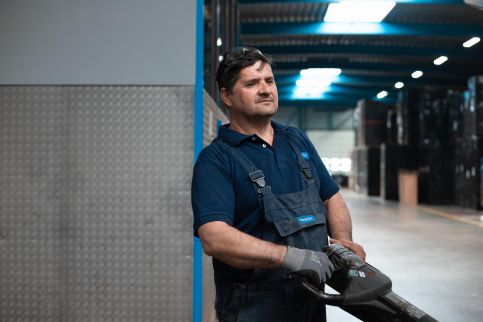Insulation materials and fire safety

Fire safety is a crucial factor to consider when selecting insulation materials. In the event of a fire, certain insulation materials can lead to smoke generation, release toxic gases, and contribute to fire spread, posing serious consequences to human lives and properties. In this article, we will explore the relationship between insulation materials and fire safety, emphasizing the benefits of Rhino-Phen®, a phenol-formaldehyde foam.
Fire safety of insulation materials
During a fire, it is essential for insulation materials to slow down the spread of flames, minimize smoke generation, and restrict the formation of toxic gases. Unfortunately, many traditional insulation materials do not meet these requirements, resulting in significant risks to both humans and the environment.Some insulation materials can produce substantial amounts of smoke during a fire, obstructing visibility and complicating evacuation. Rhino-Phen®, on the other hand, stands out by exhibiting minimal smoke generation during combustion, allowing for maintained visibility and providing a safe escape route for people.Certain insulation materials, such as PIR/PUR, may release toxic gases like hydrogen cyanide during a fire. These gases are harmful to health and can have severe consequences for those exposed to the smoke. In contrast, Rhino-Phen® only produces CO and CO2 (similar to wood), minimizing health risks associated with toxic gases.Insulation materials that readily catch fire can contribute to the rapid spread of flames. However, Rhino-Phen® forms a protective carbon layer during combustion, safeguarding the other layers within the foam and limiting fire spread.
Rhino-Phen®: Combining fire safety and effiency
Rhino-Phen® is an advanced insulation material that stands out for its excellent fire properties and very low thermal conductivity. Here are some reasons why Rhino-Phen® takes the lead:Rhino-Phen® achieves the highest fire classification in the plastic foam category, namely Euroclass B. This indicates that the material has excellent fire resistance and complies with stringent safety standards.During combustion, Rhino-Phen® develops a carbon layer that shields the other layers within the foam. This slows down the spread of flames and enhances the safety of people and properties.Another crucial aspect of fire safety is the melting point of the insulation material. Some traditional insulation materials have a melting point, which means they can melt and lose their insulating properties when exposed to high temperatures. This increases the risk of further fire spread due to burning droplets or particles.The remarkable feature of Rhino-Phen® is that it does not have a melting point. As a thermosetting material, Rhino-Phen® retains its structure and insulating properties even under extreme heat, providing better protection against fire and minimizing the risk of fire spread and further damage.Rhino-Phen® produces almost no smoke during combustion, which is vital for visibility and facilitates safe evacuation in case of a fire.Unlike some other insulation materials, such as PIR/PUR, Rhino-Phen® only emits CO and CO2 during combustion. This minimizes exposure to harmful and toxic gases, ensuring the safety of users.
Conclusion
When selecting insulation materials, fire safety is a critical consideration. Rhino-Phen® offers outstanding fire properties, creating a safe environment in the event of a fire. With its Euroclass B fire classification, protective carbon layer, minimal smoke generation, and limited emission of toxic gases, Rhino-Phen® provides an excellent solution for insulation with fire safety as a priority.If you are seeking an insulation material that protects your buildings from fire hazards while providing efficient thermal insulation, Rhino-Phen® is the right choice.Contact us for more information about Rhino-Phen® and discover how it can fulfill your insulation needs with a focus on fire safety.Disclaimer: This article is intended for informational purposes and is not a substitute for professional advice. Always consult qualified experts for specific insulation requirements and fire safety guidelines.


